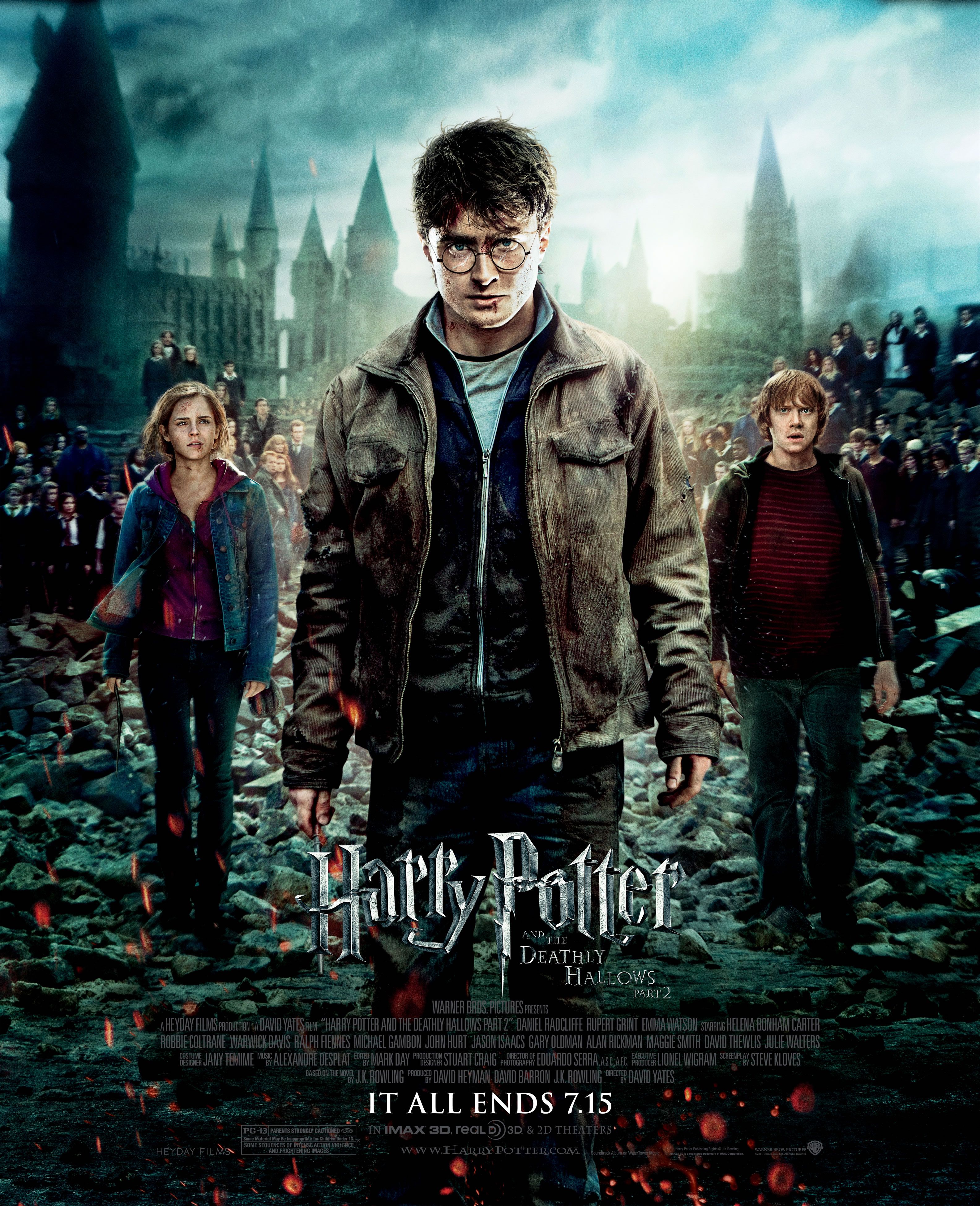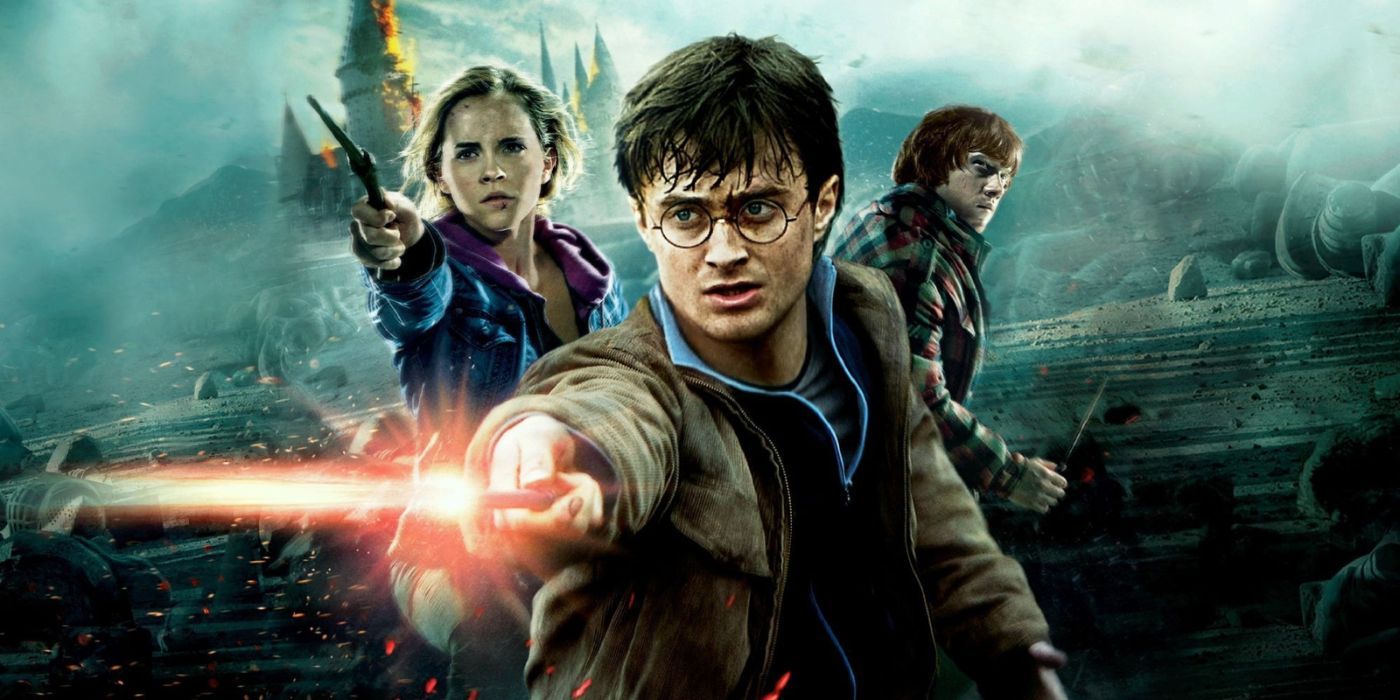The Harry Potter movies get a lot right, just not this.
The Big Picture
- The Harry Potter novels used detailed spells to create a unique fantasy world, but the films failed to capture the same level of detail.
- The spells used in the books had important meanings and contributed to character development, but this was lost in the films.
- The later Harry Potter films had impressive action sequences but lacked specificity, resulting in a loss of individual fighting styles and becoming empty spectacles.
The legacy of the Harry Potter novel series and the film franchise that inspired it are very different. While the Harry Potter books have become overshadowed by the transphobic comments of their author, J.K. Rowling, the Wizarding World films served as an appropriate coming-of-age story for many young fans who grew up on the adventures of Daniel Radcliffe, Rupert Grint, and Emma Watson. Even so, the films do fall short when it comes to the use of spells and magic.

Harry Potter and the Deathly Hallows – Part 2
Harry, Ron, and Hermione search for Voldemort’s remaining Horcruxes in their effort to destroy the Dark Lord as the final battle rages on at Hogwarts.
- Release Date
- July 7, 2011
- Director
- David Yates
- Cast
- Ralph Fiennes , Michael Gambon , Alan Rickman , Daniel Radcliffe , Rupert Grint , Emma Watson
- Runtime
- 130 minutes
Why Spells Are So Important in Harry Potter
In the Harry Potter novels, each spell, charm, and curse is explained in implicit detail. Their descriptions are important parts of the world-building that helped establish Harry Potter’s unique place amongst fantasy sagas. In the books, characters can’t simply just wave their wands and expect to see a result; they need to put effort into channeling a specific phrase to produce the desired effect. Many of the most entertaining scenes in the first few novels come from Harry and his friends trying to master spells that are considered challenging. Learning how Harry and the students of Hogwarts develop their skills makes the novels feel like coming-of-age stories and not just fantasy adventures.
This attention to detail when it comes to specific spells is also a hallmark in the first few films. One of the most important scenes in 2002’s Harry Potter and the Chamber of Secrets is when Harry and Draco Malfoy (Tom Felton) are learning how to duel from their new Defense Against the Dark Arts instructor, Gilderoy Lockhart (Sir Kenneth Branagh). Lockhart teaches Harry how to use the disarming spell “Expelliarmus.” Although Harry is more interested in wounding Malfoy than disarming him, the “Expelliarmus” spell comes to his advantage more than a few times within the series.

Harry Potter Wasn’t in One of the Movies’ Bravest Moments
It takes a very brave witch to be able to cast a spell like this.
“Expelliarmus” is the same spell that Draco uses to disarm Albus Dumbledore in Harry Potter and the Half-Blood Prince. It’s important to know that Draco is the one to disarm Albus Dumbledore (the late great Michael Gambon), and not Severus Snape (Alan Rickman). Since Dumbledore possesses “The Elder Wand,” ownership of the seemingly undefeatable wand passes to Malfoy; it in turn passes to Harry when he successfully disarms Malfoy in Harry Potter and the Deathly Hallows- Part 1. The “Expelliarmus” spell may be harmless, but it changes the course of Harry Potter mythology due to the nature of wand ownership.
There’s also a tremendous amount of time in Harry Potter and the Goblet of Fire spent on defining the three “Unforgivable curses.” The Cruciatus Curse (“Crucio”) generates intolerable pain for its victim, the Imperius Curse gives a user power over their victim’s actions (“Imperio”), and the Killing Curse (“Avada Kedavra”) does exactly what it suggests. Harry’s latest Defense Against the Dark Arts Teacher, Mad-Eye Moody (Brendan Gleeson), explains exactly what these curses do, and why they are considered to be “unforgivable” by most witches and wizards.
Beyond being a cool piece of trivia for Harry Potter experts, the meaning of these spells provides important pieces of backstory. It’s important that as an infant, Harry is the only wizard to survive the Killing Curse; this is why he is known as “The Boy Who Lived.” It’s also mentioned that Bellatrix Lestrange (Helena Bonham Carter) forced several victims to go insane because of her repeated use of the Cruciatus Curse. Knowing that Bellatrix chose to torture, and not simply kill her victims, is why she is one of the better-written villains in the Harry Potter saga.
The Later Harry Potter Movies Get the Magic All Wrong
The early Harry Potter films had the benefit of having time to spend on detailing each spell and what they meant. Unfortunately, this changed once director David Yates took over the franchise with his adaptation of Harry Potter and the Order of the Phoenix. The films got denser and had to introduce more characters, leading to bigger action sequences with many more flashing lights and spells. While Yates created a lot of impressive action sequences, it became impossible to determine which spells were being uttered.
In The Goblet of Fire, it’s important that Harry uses the “Expelliarmus” spell to ward off Voldemort (Ralph Fiennes) after surviving the Triwizard tournament. While neither of the spells produces the desired effect because Harry is able to escape back to Hogwarts, both Harry and Voldemort use the same spells when they reunite for their final duel. While the books make it clear that it’s Voldemort’s rebounded killing curse that costs him his life, Harry Potter and the Deathly Hallows – Part 2 features the two simply screaming at each other as they cast seemingly indistinguishable flashes of light.
The spells that Harry and Voldemort use say something about them as characters. Voldemort is so intent on killing that he neglects to give himself a defense, and Harry is ultimately unwilling to use one of the “Unforgivable Curses.” Although Harry is tempted to use the Cruciatus Curse a few times in the previous films as he questions his own heroism, he ultimately matures and chooses to leave these darker attributes behind him.
It became harder to appreciate each character’s individual fighting style without knowing which spells they were using. Order of the Phoenix ends with a show-stopping magical duel between Dumbledore and Voldemort, but it’s impossible to determine what the two wizards are saying. Instead of feeling like the ultimate face-off between good and evil in the Harry Potter universe, the battle just feels like an empty bit of spectacle.
David Yates’ Harry Potter films certainly did not lack spectacle, but they may be an example of too much of a good thing. The Star Wars franchise had its “lightsaber fatigue,” and in turn, the Harry Potter universe has its “magic fatigue.” The later sequels lacked the specificity that had made the early Harry Potter films feel so unique.
All the Harry Potter films are available to stream on Max in the U.S.
This article was originally published on collider.com


